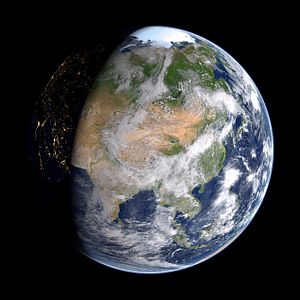A month ago, the number of confirmed cases of COVID-19 — caused by a novel coronavirus that emerged in late 2019 in Wuhan, China — around the world passed the 1 million mark. As of May 6, there are 3.7 million reported cases around the world since the beginning of the pandemic. More than 250,000 people have died from COVID-19 in less than six months.
In early April, I wrote an article titled “Where In the World Are There No Coronavirus Cases?” The countries with no reported cases of COVID-19 fell into three broad, and sometimes overlapping, categories: isolated island states, duplicitous autocratic states, and poor states with little capacity to test widely or well.
One interesting facet of attempting to count is the fact that the exact number depends on how you count “countries” — for example, the Cook Islands are usually grouped in with New Zealand, with which the island state freely associates; Guam is an “organized, unincorporated territory” of the United States. (The Cook Islands has had no COVID-19 cases confirmed and New Zealand’s prime minister said they’d won the “battle” against the virus in late April.) The Pacific is a web of political statuses: territories, freely associated states, and fully independent states (though some with defense arrangements with either New Zealand or Australia.)
But nevertheless, by my count the roster of apparently lucky (or lying) few has dwindled to about a dozen: North Korea, Turkmenistan, Lesotho, the Solomon Islands, Vanuatu, Samoa, Kiribati, Micronesia, Tonga, the Marshall islands, Palau, Tuvalu and Nauru. Of the countries that appeared in earlier articles as case-free, Comoros and Tajikistan have confirmed cases now.
In my earlier article I tried to walk through the range of reasons a state would or could remain untouched by the pandemic. In this piece, I want to explain more deeply the underlying logic of how to think about the last (officially) COVID-19-free countries.
First, it’s important to recognize that all the wonderful dashboards available on the internet are nevertheless hamstrung by the same data that powers them. Because that data comes from governments, the transparency and trustworthiness of a given government matters tremendously in whether the data is actually reliable. After a country confirms the virus’ presence, a government can certainly still manipulate how bad the situation appears via data. It will be less conspicuous to do so, but under-reporting cases and deaths nevertheless misrepresents reality in a dangerous way.
While it would be simple to sort countries into transparent democracies and opaque autocracies, the present crises exposes the fact that reality is more complex than that: Vietnam, an autocratic communist state, has been been seen as very transparent about COVID-19; meanwhile, some states within the United States have been transparent about the crisis, while others have moved to hide critical information and rushed to re-open.
Second, a given country’s infection and death rates rest on a web of factors that include, but are not limited to, the timing and range of government preventative actions, international integration and travel patterns, population density, poverty, healthcare system type and testing capacity, and arguably also cultural norms with regard to matters such as obedience to government orders and normalization of mask wearing. Certain states — by the virtue of their existent attributes — are more insulated or more prepared; others are at higher risk despite greater capacities. Factoring in these complexities is as important as being critical about what data is, or is not, available.
Tajikistan is an illustrative example of a perfect storm of risks in both the first and second factors explained above. Unlike uninfected Pacific Islands, Tajikistan’s land borders are much more difficult to police. In addition Dushanbe stumbled in rolling out preventative border and travel controls — announcing a ban on the entry of foreigners from 35 countries the first week of March and then the next day reversing that decision. Not only was Tajikistan arguably already at higher risk, its government monumentally botched the rollout of reasonable precautionary measures.
On April 30 the Tajik government acknowledged its first 15 COVID-19 cases at once. Within a week, by May 6, that number had leapt officially to 379, with eight deaths. The announcement of its first cases came after weeks of criticism from regional observers and journalists (myself included), who were being told by sources inside the country that the state’s denials were almost certainly lies and that Dushanbe was covering up the reality of COVID-19 in the country. Now that Tajikistan has reported cases, in-country sources continue to say that reality is far worse than what the government says.
Turkmenistan, even more secretive and autocratic than Tajikistan, remains in denial.
For states that continue to report no cases — either believably (as in the Pacific) or not (looking at you, Turkmenistan and North Korea) — there is only small benefit in that victory. These states are still affected by the devastation COVID-19 has wrought on the global economy, and the risk still exists that the virus could creep onto their shores, if it has not already. Denial is not a real vaccine.

































